Up at dawn
We start very early in the morning so that we can finish before the temperatures become too hot. When you live in Casamance, the heat and humidity are pervasive, and demining under the blazing sun is no picnic. First stop, the HI office. This is where we load all the material we need onto the vehicles - equipment, tools, first aid kits and maps. Then we all climb aboard and the convoy sets off in the first light of day.
To reach Kouring, we have to drive for a good forty minutes. The last three miles are along a rough track riddled with potholes. Casamance still has many hazardous areas, contaminated by explosive devices. And, on top of the risks of the job, until recently there was the threat of people or armed groups. To protect us from incidents like this, HI takes all necessary measures to guarantee our safety.
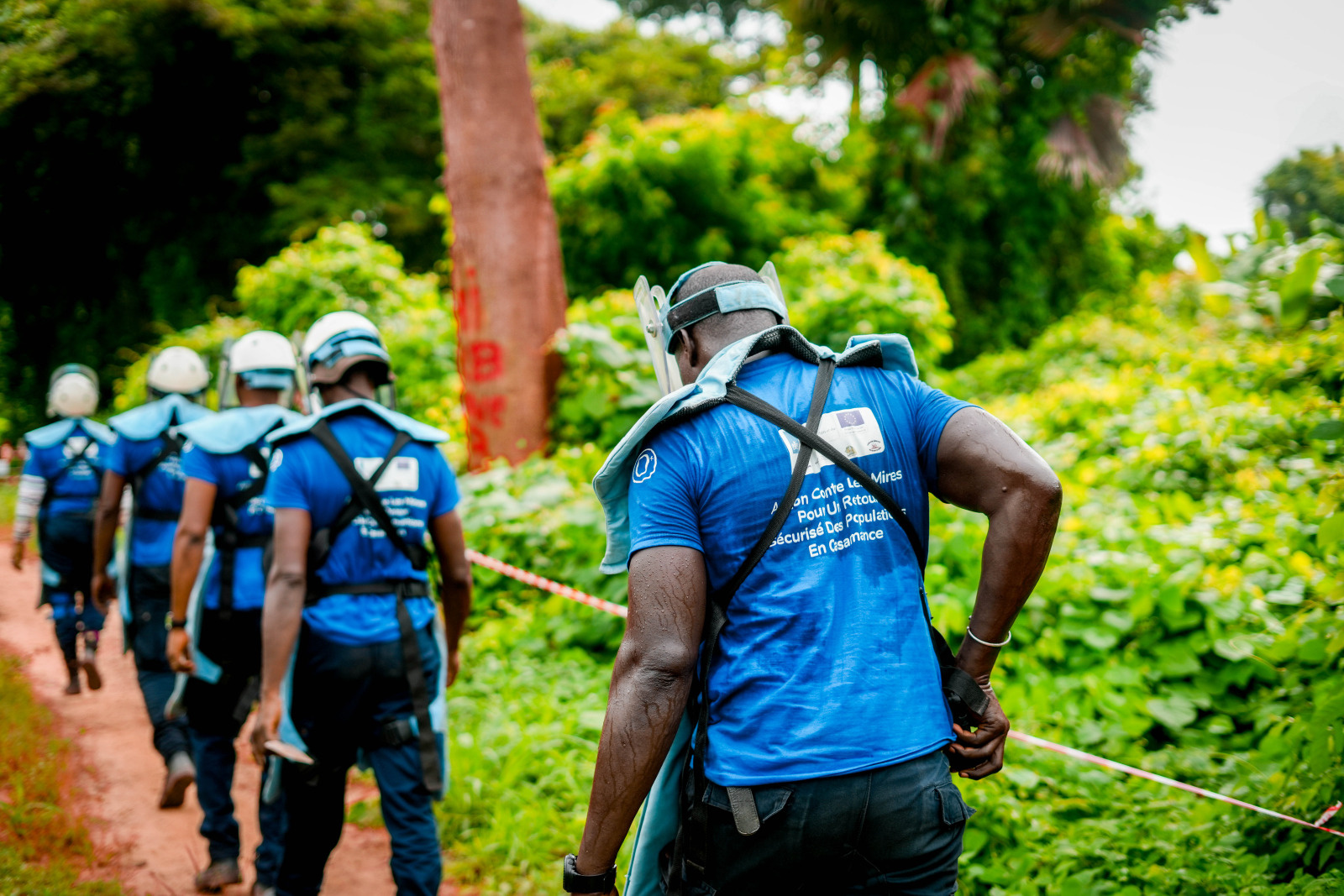
On arrival, everyone gets busy unloading the cars and setting up camp; a merry dance begins, setting up tables and chairs under the trees, bringing out the tracking charts and hanging up the maps. This is also an opportunity for us to grab a coffee and a doughnut in preparation for the long day ahead. Then the serious stuff starts: the team leader reminds everyone of the context and the day's objectives and puts us into teams for the day.
Manual demining: a painstaking task
It's only 8.30am, but it's already over eighty degrees. To work safely, we have to wear protective equipment weighing around twenty pounds! Once protected from head to toe, we leave the pleasant shade of the trees and walk under the scorching sun to the zone to be cleared today.
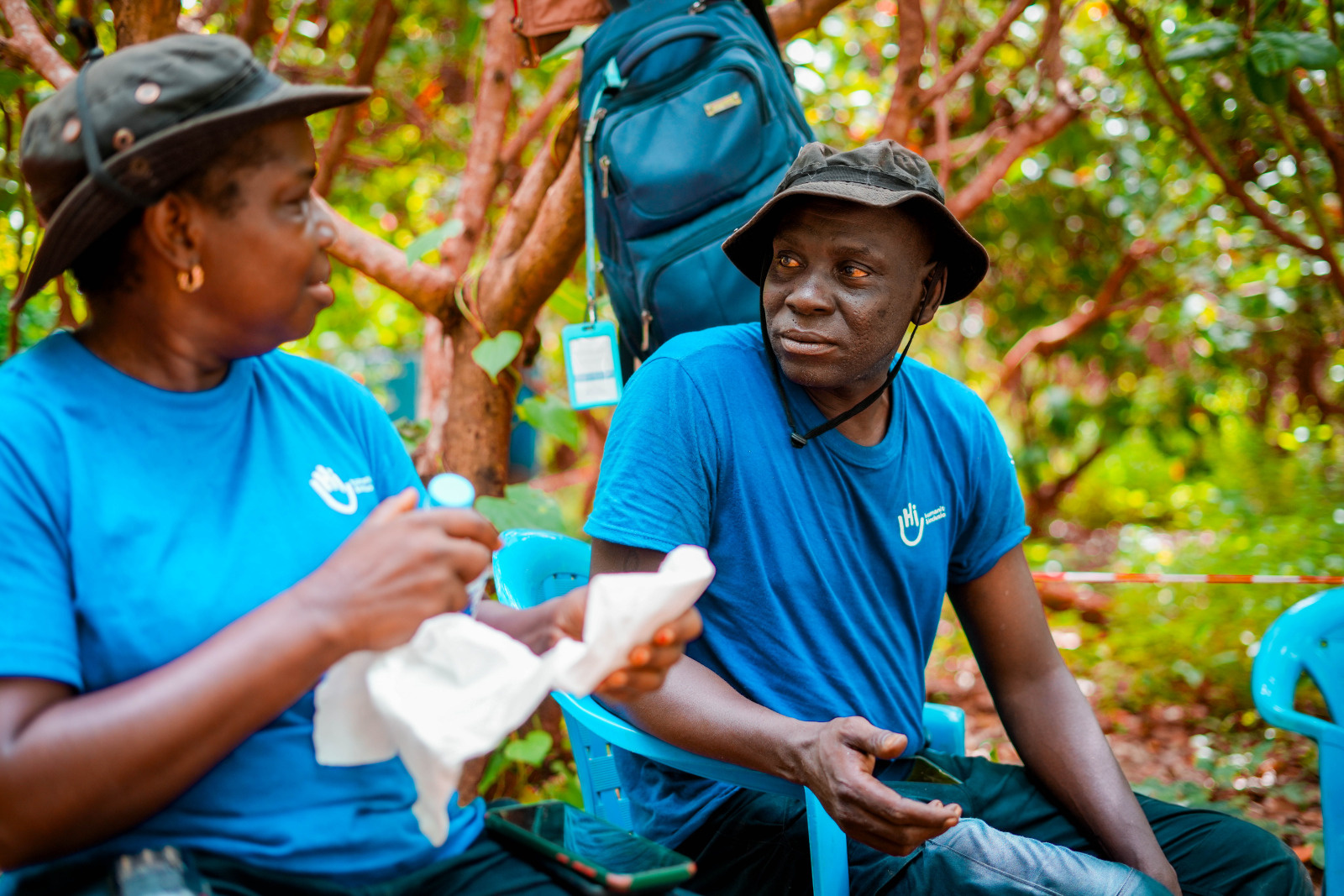
In Kouring, HI’s teams are carrying out a full excavation of the roads at a commercial crossroads in the heart of the region, which the threat of mines has made unsafe for use. In all, HI’s teams will be making some over 37,000 square feet of strategic routes safe for the population. This means checking every square inch of land.
We work in pairs: in turn, we kneel down in our work corridor, which is around 3 ft. wide, and begin carefully removing the vegetation and dead leaves covering the ground. Then it's time for the probe, which we insert every few inches to palm-height. Then, using a small shovel, we remove the portion of earth that has been probed... and repeat the process a few inches further along.
After 30 minutes, it’s time to change over, and a supervisor walks along the corridors to check that everything is being done according to the rules and protocols and make sure everyone stays safe.
Mechanical demining: the precious help of a machine
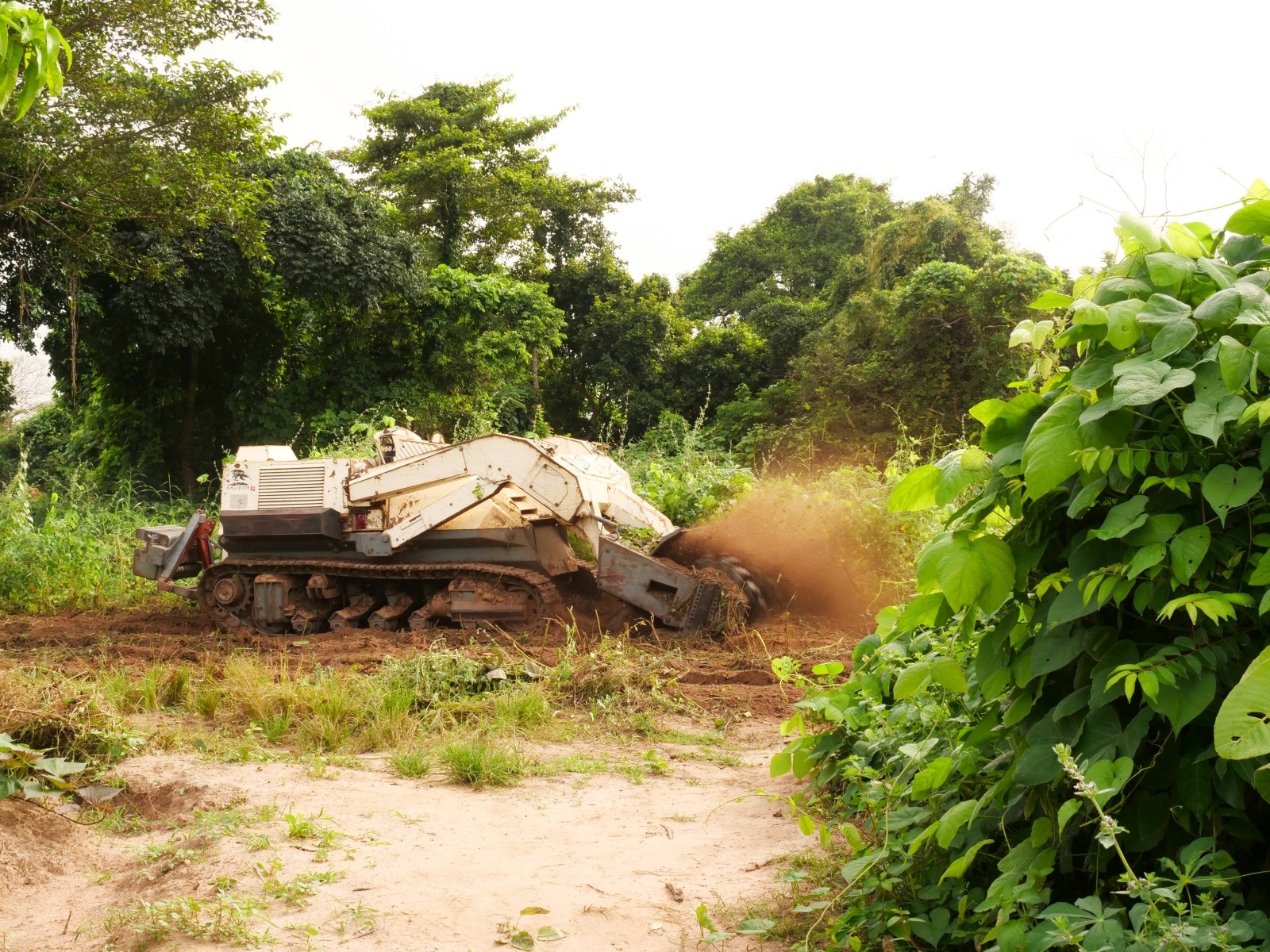
After a few rotations, it's time for a break: we retreat to the rest area where we can get out of our protective gear and relax in the shade of the trees. It's time for a coffee or a cold lemonade, shared between colleagues. We chat, rest and recuperate. Then it's time to get dressed again and get back to work. In Senegal, HI also uses a digger for mechanical mine clearance.
The machine is controlled remotely and equipped with a tiller. It plows the ground and detonates or raises any explosive devices to the surface where we can defuse them. It can cover a lot of ground and is invaluable in Casamance to ensure the safety of deminers against the presence of undetectable mines. In a zone where the dense vegetation can present real obstacles to manual mine clearance, it also enables us to keep a safe distance from potential threats such as snakes, ants and scorpions.
Destruction of a rocket head
Suddenly, a call goes out to all the teams: a colleague has found a suspicious device. While the team leader goes to the site to identify the object and secure the corridor, we retreat to the rest area. The information is quickly confirmed: it's a rocket head and the decision is taken to destroy it on the spot.
But first, the villagers have to be warned and the area secured. The community liaison officers set off to warn the villagers to keep a safe distance. The deputy chief of the village comes to check on the presence of the device and its destruction, in order to inform the rest of the villagers.
In the meantime, we set up the equipment needed to detonate the rocket head safely. We place bags filled with earth around and on top of it, unwind a cable several hundred feet long and link the rocket head to a detonator. The medical team is positioned at the entrance to the safety perimeter, ready to intervene if necessary.
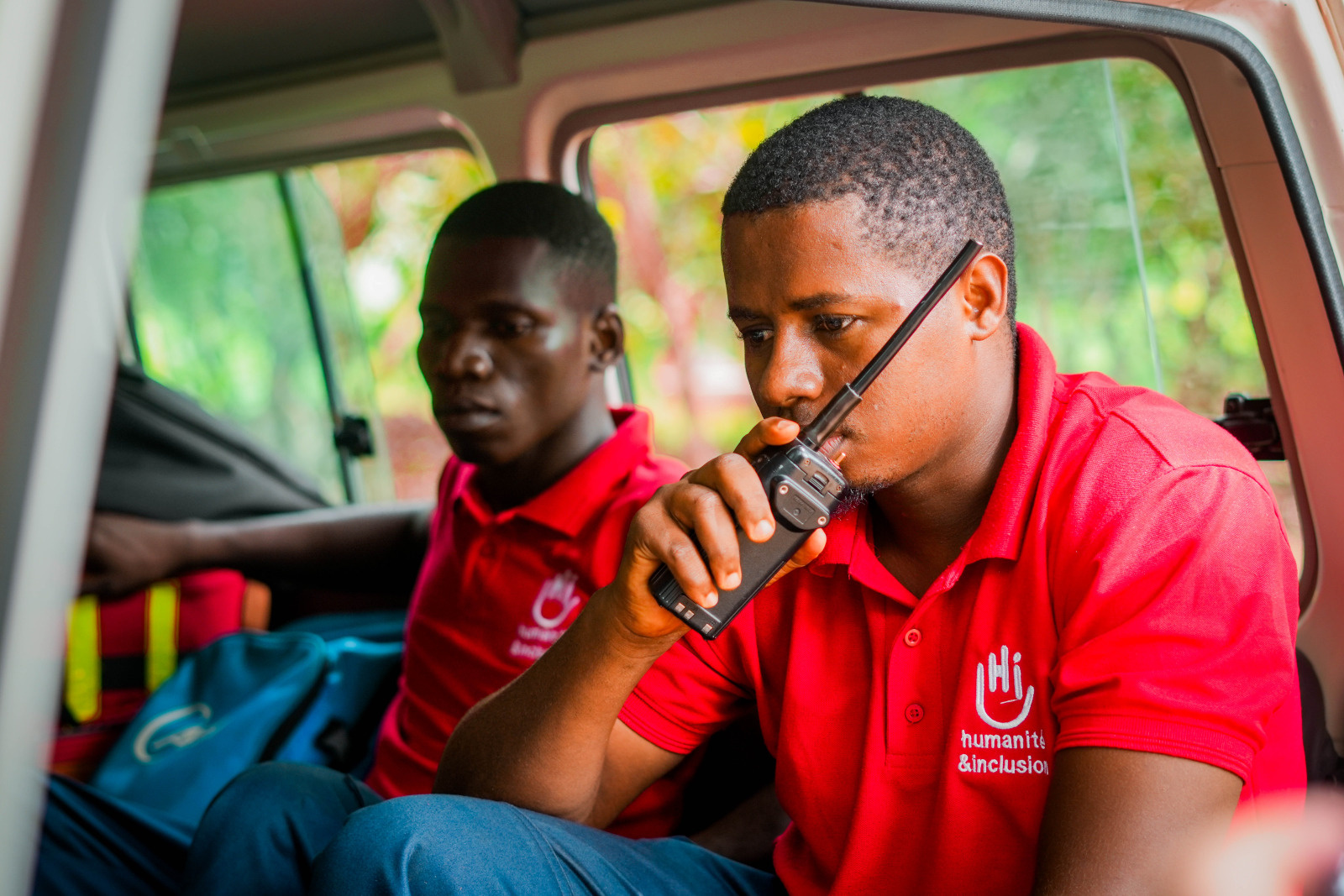
Shortly before the detonation, the final checks are carried out and the final safety instructions are broadcast over a loudspeaker, warning anyone still in the area to keep clear. Then, at the appointed time, a colleague presses the detonator. Barely a second passes before the earth shakes and we hear a loud "boom". That's it – the rocket head has been destroyed. A small team then heads off to check that there are no dangerous fragments remaining.
Each explosive device destroyed is one less threat for inhabitants. Since work began in July 2023, our teams have destroyed 15 explosive devices and cleared 36,673 square feet of land.
A well-earned rest at the end of the day
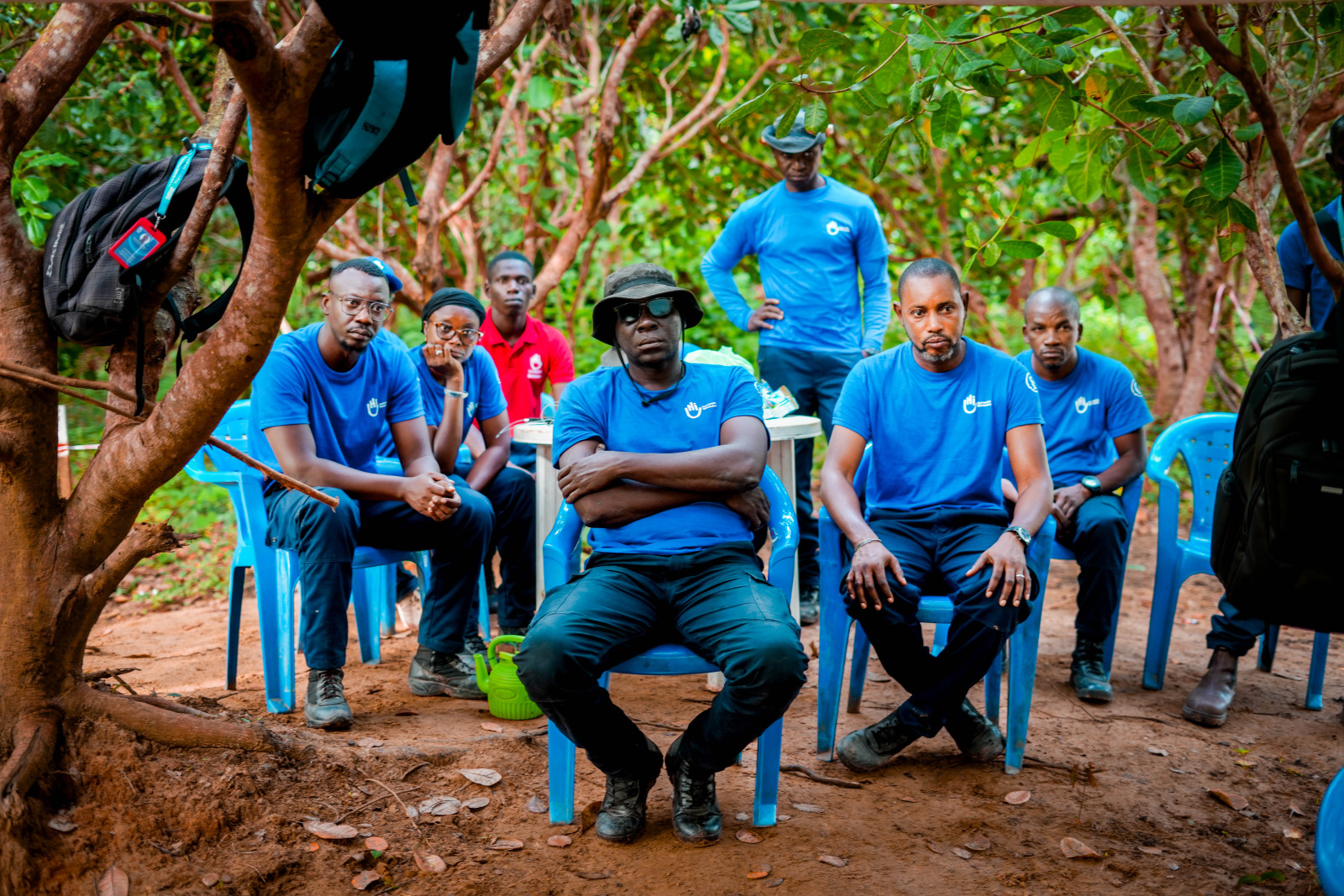
Mid-afternoon, the team leader brings us all together for a debriefing. He reviews the day's progress and outlines the next steps. Then it's time pack up the tables, chairs and maps until tomorrow. Once we’ve cleared the rest area, the convoy heads back to Ziguinchor, where we’ll gather our strength for the next day.
Sometimes we set up base camps a few miles away from a clearance site. This saves precious time by avoiding long journeys to and from the city. But it also means that we can spend three weeks away from home. The strength of our teams comes from the bonds of trust and solidarity forged over time. We're a real family and we know that we can count on each other’s unfailing support.
Senegal estimates the extent of contamination linked to the conflict in Casamance at over 12,900,000 square feet of land, spread over five departments. In May 2022, HI relaunched its demining operations in Casamance, where the organization had already cleared more than 9,000,000 square feet of land since 1996. HI's current two projects, ARC and BUZA, will clear 8,000,000 more square feet of land by 2025, helping to restore security and socio-economic prosperity to communities in the Ziguinchor and Sédhiou regions. These projects are funded by the European Union and the Dutch Ministry of Foreign Affairs.









